Episode 145 – Blast From the Past Episodes 5 and 6
[iframe src=”http://html5-player.libsyn.com/embed/episode/id/2136782/height/100/width/480/thumbnail/yes” height=”100″ width=”480″ scrolling=”no”]In this episode I’ve got another blast from the past for you. We have reached deep into the podcast archive and retrieved episodes 5 and 6.
In Episode 5 we touch on using the video website YouTube for genealogy, and then I walk you through how to Bring Sites Back From the Dead with Google. Then we wrap things up with a cool little way to Spice Up Your Genealogy Database.
In episode 6 I have a gem for you called Cast a Shadow on Your Ancestors, and we cover the free genealogy website US GenWeb
Episode: # 05
Original Publish Date: March 25, 2007
MAILBOX
Email this week from Mike O’Laughlin of the Irish Roots Cafe: “Congratulations on your podcast! I am sure it will help many folks out there. I was glad to see the fine Irish families of Scully and Lynch on your latest show notes!”
GEM: You Tube Follow Up
Note: The Genealogy Tech Podcast is no longer published or available.
- YouTube in the news – the concern was raised by Viacom this month about YouTube benefiting from their programming without compensating them, which could mean copyright infringement. While the course of YouTube could change depending on the outcome of this suit, the attraction for family historians remains strong because of the nature of the content.
- Software mentioned:
Pinnacle. Final Cut for MAC. Limits with Movie Maker - I posted 2 videos – A Nurse In Training Part 1 & 2
Genealogy Gems YouTube Channel Click the Subscribe button to receive notification of new videos
GEM: Bring Sites Back From the Dead with Google
When you get a “File Not Found” error when clicking on a link, it doesn’t mean the information is always gone forever. You may be able to find it in the Cache version.
Google takes a snapshot of each page it examines and caches (stores) that version as a back-up. It’s what Google uses to judge if a page is a good match for your query. In the case of a website that no longer exists, the cache copy us a snapshot of the website when it was still active hidden away or cached.
Practically every search result includes a Cached link. Clicking on that link takes you to the Google cached version of that web page, instead of the current version of the page. This is useful if the original page is unavailable because of:
1. Internet congestion
2. A down, overloaded, or just slow website – Since Google’s servers are typically faster than many web servers, you can often access a page’s cached version faster than the page itself.
3. The owner’s recently removing the page from the Web
Sometimes you can even access the cached version from a site that otherwise require registration or a subscription.
If Google returns a link to a page that appears to have little to do with your query, or if you can’t find the information you’re seeking on the current version of the page, take a look at the cached version.
Hit the Back button and look for a link to a “cached” copy at the end of the URL at the end of the search result. Clicking on the “cached” link should bring up a copy of the page as it appeared at the time that Google indexed that page, with your search terms highlighted in yellow.
If you don’t see a cached link, it may have been omitted because the owners of the site have requested that Google remove the cached version or not cache their content. Also, any sites Google hasn’t indexed won’t have a cache version.
Limit: If the original page contains more than 101 kilobytes of text, the cached version of the page will consist of the first 101 Kbytes (120 Kbytes for pdf files).
Really looking for an oldie but a goody? Try the Wayback Machine
It allows you to browse through 85 billion web pages archived from 1996 to a few months ago.
To start surfing the Wayback, type in the web address of a site or page where you would like to start, and press enter. Then select from the archived dates available. The resulting pages point to other archived pages at as close a date as possible. Keyword searching is not currently supported.
GEM: Spice up your database
- Search Google Images, then Right click and save to your hard drive.
- Use Silhouettes
- Find something that represents what you do know about that person. It really does help you see them more as a person and less as an entry in your database – their occupation, a reader, a sport, etc.
Episode: # 06
Original Publish Date: April 1, 2007
You can learn more about Jewish roots at the 350 Years of American Jewish History website JewishGen, The Home of Jewish Genealogy
GEM: Cast a Shadow on Your Ancestors
In the episode #5 I shared a little gem that would spice up your genealogical database – adding silhouettes and artistic images to the file of an ancestor when you don’t have a photograph.
Probably the most famous silhouette these days are the silhouettes used by Apple for advertising the iPod digital music and audio player. It may surprise your teenager or grandchild to learn that the first silhouettes were done hundreds of years ago.
Back then silhouettes (or shades as they were called), they paintings or drawings of a person’s shadow. They were popular amongst English royalty and the art form quickly spread to Europe. A silhouette can also be cut from black paper, and was a simple alternative for people who could not afford other forms of portraiture, which, in the eighteenth century, was still an expensive proposition.
The word took its name from Étienne de Silhouette, but it’s uncertain as to whether his name was attributed because he enjoyed this art form, or as the story goes because the victims of his taxes complained that they were reduced to mere shadows.
Either way, the popularity of Silhouettes hit new heights in the United States where they were seen in magazines, brochures and other printed material. But they faded from popularity as Photographs took over in the 1900s.
As a follow up, I want to share with you a simple technique for creating your own silhouettes. You can use ordinary snapshots to create a visual family record.
- Take a photo of a person in profile against a neutral background.
- Blanket the photo background with white acrylic or tempera paint
- Fill in the image with a heavy black permanent marker, curing the shoulders down for a classical pose.
- Add fun details like cowlicks, eyelashes, hats, and jewelry that express the person’s personality with a fine felt-tip pen.
- Photocopy the doctored photos onto quality art paper. Since glossy papers work print best, you could also use your computer scanner to scan the image into your hard drive. From there you can add it to your database, or print it out onto glossy photo paper for mounting.
To represent folks in your family tree, create a silhouette of your father to represent his Great Great Grandfather, and add a farmer’s hat and rake to represent his profession of farming. Chances are dad has inherited some of his profile anyway. Have fun with it and be creative. But of course be very sure to label to silhouette appropriately as a creative interpretation rather than a literal rendering.
You can also do silhouettes of your family including extended family and arrange the portraits together on a wall. Use black painted frames in a variety of shapes and sizes and hang in a way that represents the family tree / relationships.
Check out the Art Café Network website for a Short History of Silhouettes by Katherine Courtney.
For More detailed how-to information, they have additional pages on cutting visit http://artcafenetwork.net/meet/kat/silhouette/cutting.html
2 Silhouette books to turn to:
Silhouettes%20:%20Rediscovering%20the%20Lost%20Art<img%20src=”http:/www.assoc-amazon.com/e/ir?t=genegemspodc-20&l=as2&o=1&a=0970115105″%20width=”1″%20height=”1″%20border=”0″%20alt=””%20style=”border:none%20!important;%20margin:0px%20!important;”%20/>%20″ >Silhouettes: Rediscovering the Lost Art
by Kathryn K. Flocken
Old-Fashioned Silhouettes (Dover Electronic Clip Art) (CD-ROM and Book)
GEM: GenWeb Pages
Last year the website celebrated its 10th Anniversary. The USGenWeb Project consists of a group of volunteers working together to provide Internet websites for genealogical research in every county and every state of the United States. The Project is non-commercial and fully committed to free access for everyone. Organization within the website is by state and county.
You can go to the homepage of the website and click on the state of your choice from the left hand column. From the state page you can select the county you wish to search in. However, when I know they name of the county I want to search in, I’ve found it’s often quicker just to search at google.com and do a search like “genweb sibley county mn” The choice is yours.
Remember to use the Google search gem that I gave you in episode one (see episode #134 http://www.genealogygemspodcast.com/webpage/episode-145-a-blast-from-the-past ) to quickly search within the county website. Many don’t have search engines of their own, and so that’s when I first really started using that search technique. These county sites are often very rich though, and after a focused search, it’s rewarding just to wander the site. It will help you become more familiar with the county!
You’ll likely find databases of Births, Deaths, Marriages, townships histories, plat maps, surnames, and a host of other topics. Because each county has its own volunteer coordinator, the information you will find varies from county to county. And as always, info is being added regularly, so you need to book mark them and return on a regular basis to see what’s new.
Be sure and share your resources as well. That’s the power behind the GenWeb project – volunteers. Volunteering your county resources will enrich other’s experience and will likely lead to connections that will continue to further your own research.
Book Mentioned in this episode:
The Complete Idiot’s Guide to Online Genealogy, Second Edition
by Rhonda McClure
How to Find Images Online for Family History: Free Video Tutorials
Images make your family history more vivid. But how can you find just the right pictures to illustrate your family stories? These short, free video tutorials help genealogists find images online for family history.

When it comes to sharing your family history, pictures are not only worth a thousand words: they’re priceless. A single image can convey an ancestor’s physical appearance, mood or attitude, living or working conditions, social environment, and more. Pictures catch the eye whether they are on coffee tables, hanging on the wall in frames, or shared with loved ones on social media, where they are oh-so-clickable.
So I was happy to get this email from Phyllis, asking for some tips on how to find images online for family history:
“Hi Lisa, I know you’ve told us before what some great resources are for locating historical photos and images. I’m looking for some from the Ragtime era (1895-1918). I don’t find much at the Library of Congress. Can you send me a few links to some of your podcasts that delve into where to find images? Thank you for all the hard work you do for the genealogy world.”
How to Find Images Online for Family History
Most recently, I shared some tips for finding images in the free Genealogy Gems Podcast Episode 194. But I also recommend this series of short video tutorials, which show you exactly how to do this.
How to Find Images Online: Use Google Images
The first place I search online for images for family history is Google Images. Watch this brief tutorial video to see how to find images using your Google web browser:
If you want to use your tablet or smartphone to find images for family history, here’s another short tutorial just for you:
How to Find Images Online: Image Search in Google Books
When I am looking for pictures of people, places, buildings, historical events, maps, and other images that commonly appear in books, I also search Google Books separately for pictures that haven’t shown up in the main Google search results. You can do that, too! Here’s how:
After you’ve found images via Google Books, you’ll want to save them. Here’s one last quick video to show you how:
Using the tips given in the above video tutorials, I can run a Google search to answer Phyllis’s specific question. I’ll type ragtime era as a keyword phrase and enter the range of years, separated by two dots and no spaces, to tell Google to search for any numbers within that range. Then, as shown below, I’ll click Images to limit the results to pictures:

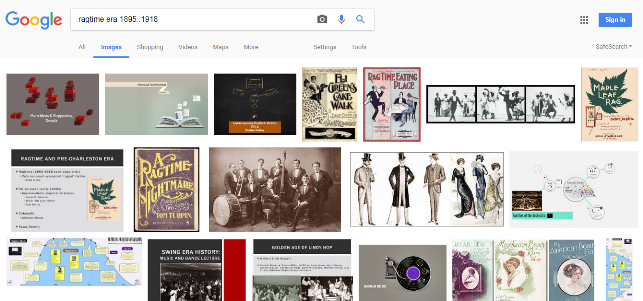
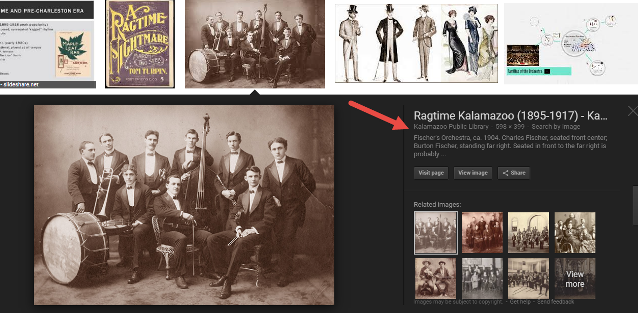
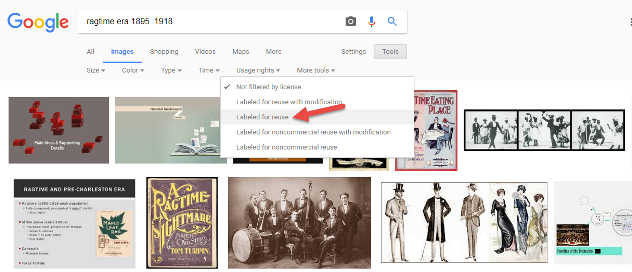
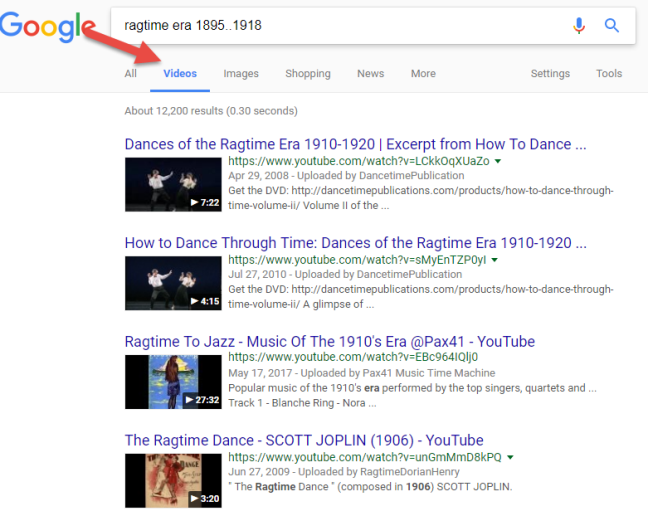
 The Genealogy Gems YouTube channel is a vast resource. I invite you to visit, explore, and subscribe. In addition to tech tip video demos such as these, you’ll also find interviews with genealogy experts. research tips for maps, newspapers and other record types, how-to series for family history blogging, creating videos, and using Evernote for genealogy, family history craft tutorials and more! Here’s a tip: Use the search box to find what you’d like to watch. (Google search operators work in YouTube searches, too. Use them to zero in on the video or podcast episode you want.)
The Genealogy Gems YouTube channel is a vast resource. I invite you to visit, explore, and subscribe. In addition to tech tip video demos such as these, you’ll also find interviews with genealogy experts. research tips for maps, newspapers and other record types, how-to series for family history blogging, creating videos, and using Evernote for genealogy, family history craft tutorials and more! Here’s a tip: Use the search box to find what you’d like to watch. (Google search operators work in YouTube searches, too. Use them to zero in on the video or podcast episode you want.)Social History for Genealogy and the Colored Farmers’ Alliance
Social history plays a significant role in successful genealogical research. The events of a particular time-frame shed new light on the lives of our ancestors and ultimately lead us to new finds. In this post, Gems Reader Trisha asks questions regarding her family’s ties to the Colored Farmers’ Alliance.
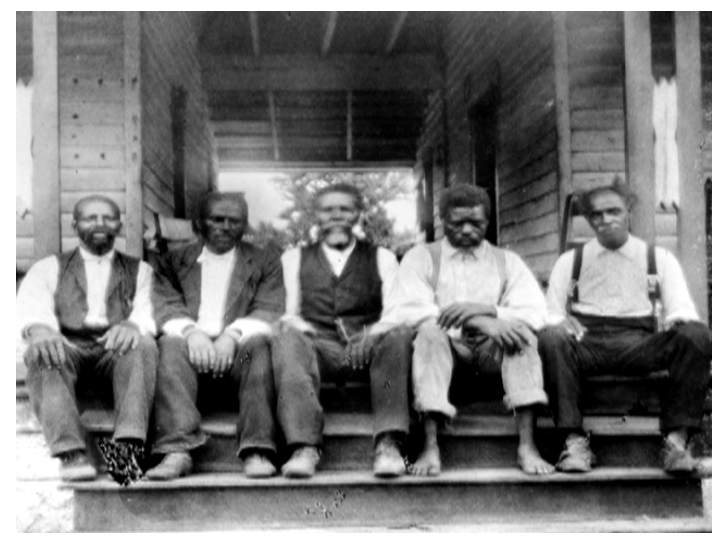
“The Colored Farmers’ Alliance.” NBC News. NBCUniversal Media. 29 July 2007. NBC Learn. Web. 22 January 2015.
Did a Member of the Family Belong to the Colored Farmers’ Alliance?
Our Genealogy Gems Editor, Sunny Morton, received the following email recently from Trisha:
I am researching my great-grandparents in Northeast Arkansas. The census records I have found so far list that my great-grandfather was a famer. So, I started looking up farming associations hoping that maybe he was a member and I could find out more information about him and possibly any relatives that lived nearby. I came across the Colored Farmers’ Alliance that was in existence from 1886- 1891 in the southern states, but I have only been able to find out basic general public information about this agency. Do you know if, or how, I can find an Arkansas member list or something similar? Any help or advice you can give me would be greatly appreciated.
The History of the Colored Farmers’ Alliance
The Colored Farmers’ Alliance was formed in 1886 in the state of Texas. A group of southern African-American farmers had been barred membership to the other Farmers’ Alliances and hoped by creating this group, they would be able to cooperatively solve the common problems of its members. The group also encouraged African-American farmers to become economically independent by purchasing homes and eliminating debt. [“Colored Farmers’ Alliance,” The Gilder Lehrman Institute of American History (https://www.gilderlehrman.org/history-by-era/populism-and-agrarian-discontent/timeline-terms/colore : accessed 28 Oct 2016).]
The organization took off and spread across the Southern United States. It’s peak membership was up to 1.2 million in 1891. However, the organization did not survive long. In 1891, the Colored Farmers’ Alliance called a general strike of African-American cotton-pickers and demanded a wage increase from 50 cents to $1 per hundred pounds of cotton. The strike failed and the group dissolved. [“Colored Farmers’ National Alliance and Cooperative Union,” Wikipedia (https://en.wikipedia.org/wiki/Colored_Farmers%27_National_Alliance_and_Cooperative_Union : accessed 28 Oct 2016).]
Pulling Together Some Answers
“Little detail is known about individual members of the Colored Farmers Alliance, including its leadership.”
Google Books
A search of colored farmers alliance delivers several results on the topic. Use search operators to help Google deliver even better results, by putting quotation marks around the search phrase “colored farmers alliance.” This instructs Google to return only web pages that contain that exact phrase. You’ll find more Google search strategies in my book The Genealogist’s Google Toolbox, which also includes an entire chapter on using Google Books for genealogy.
Here’s an example of one book I found called The Agrarian Crusade: A Chronicle of the Farmer in Politics by Solon J. Buck (1920).
Click here to see the entire search results list for the search query Colored Farmers Alliance in Google Books.
While I didn’t discover any references to actual member names beyond some of the leaders, Google Books certainly offers more depth and history on the Alliance.
Digitized Newspapers
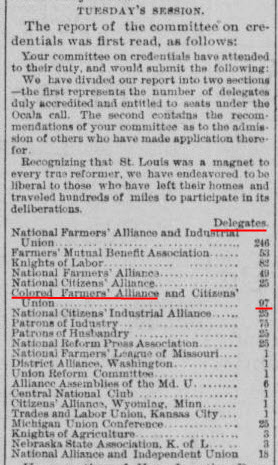
Indian chieftain., March 03, 1892, Image 1 at the Library of Congress’ Chronicling America.
(The Indian Chieftan was published in Vinita, Indian Territory [Okla.]) 1882-1902
For more help on researching newspapers for genealogy, listen to my two part podcast series titled “Find Your Family History in Newspapers, Part 1 and Part 2.”

members named
Google Scholar
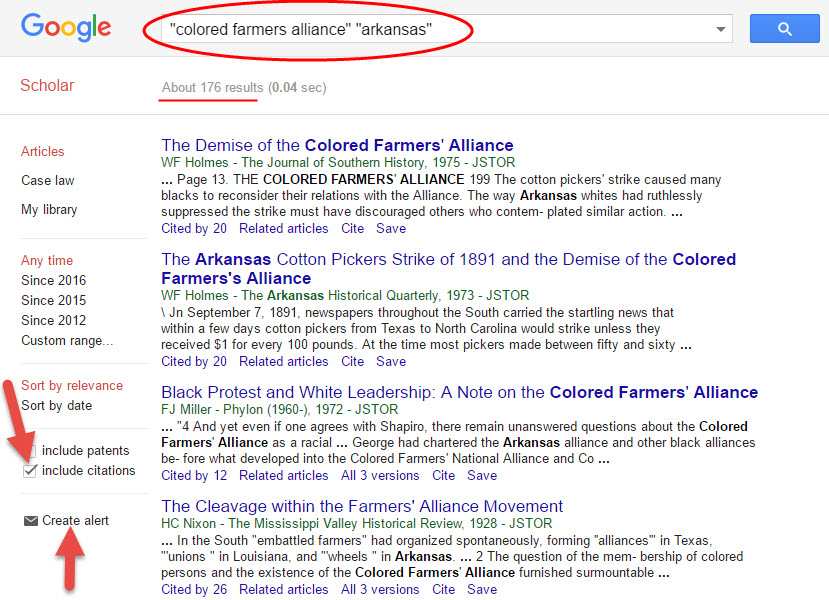
YouTube
It’s amazing what the family historian can discover from the comfort of their own computer. With so many valuable resources discovered through an online search, a well-prepared trip to the library or archive will prove even more fruitful.



